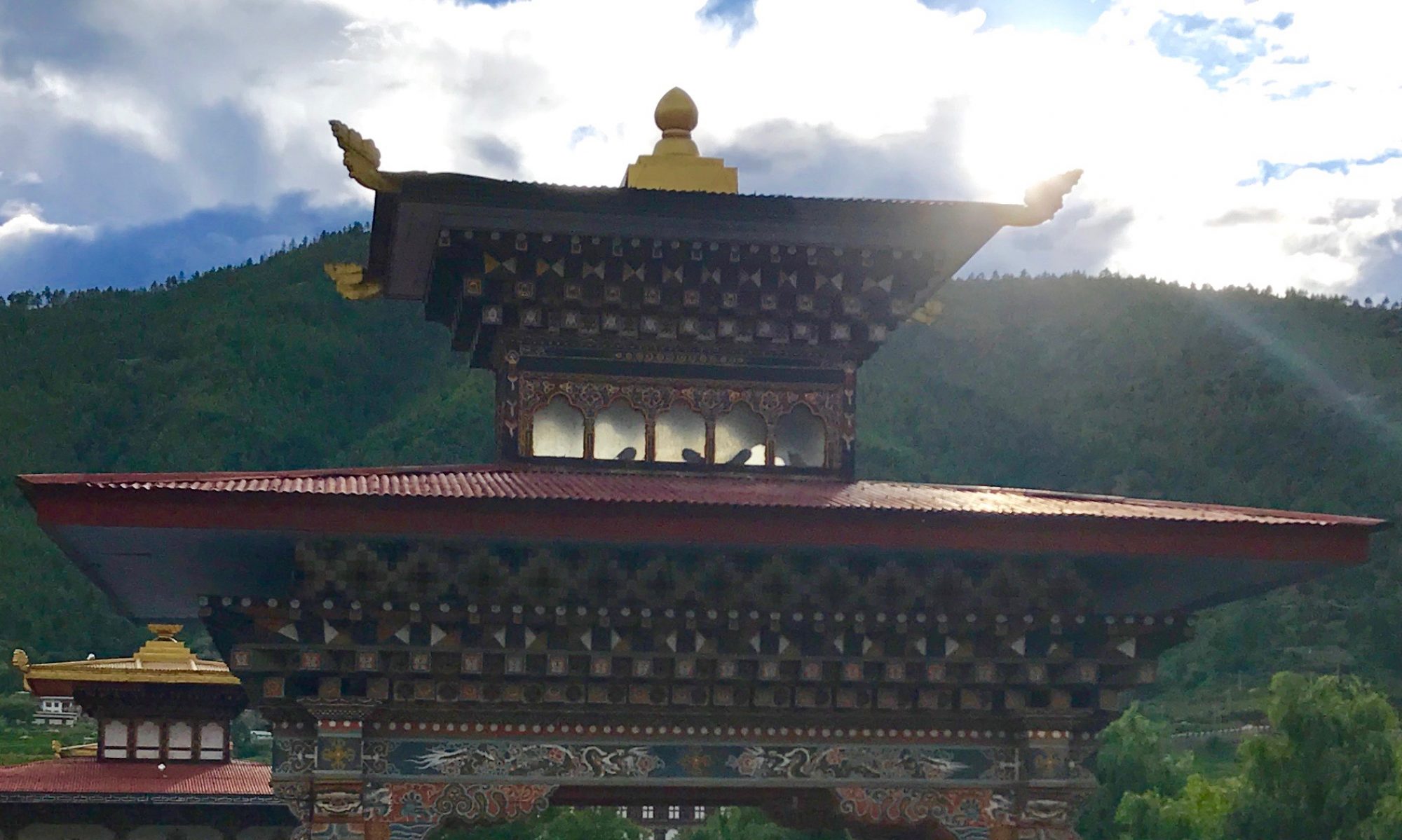James and I got up about six, but he was first out of the room, as it took some time for me to find my socks in the dark. By the time I headed out, he was nowhere to be seen. The dining room was locked, and so he went for a walk clutching his laptop. I went back and left my computer in the room and went out for a shorter walk on my own. The birds could be heard, though they were hard to see across the valley. But what a beautiful valley!
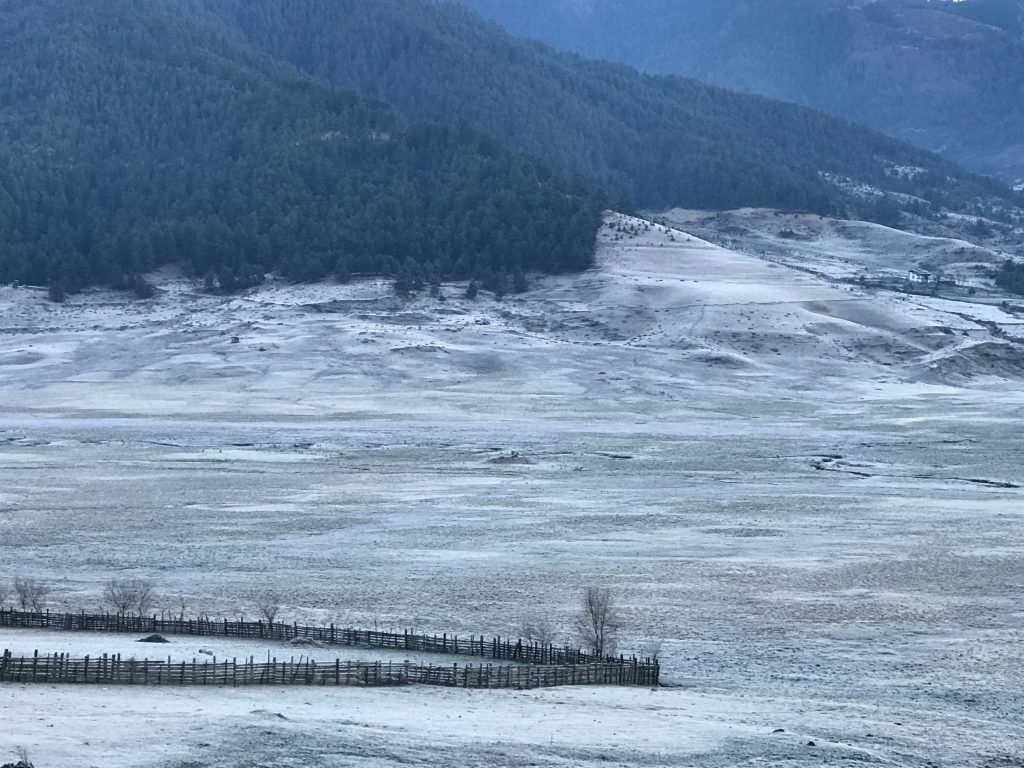
We had breakfast (with real hot chocolate, much to Jeremy and Zoë’s delight), and packed up to leave.
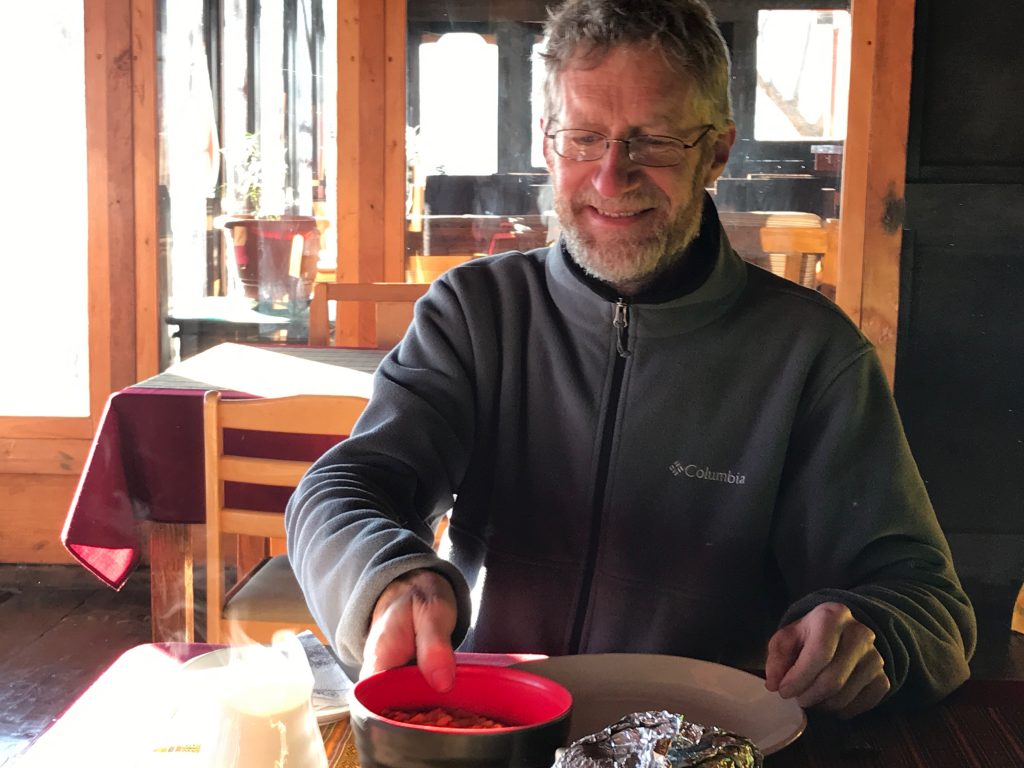
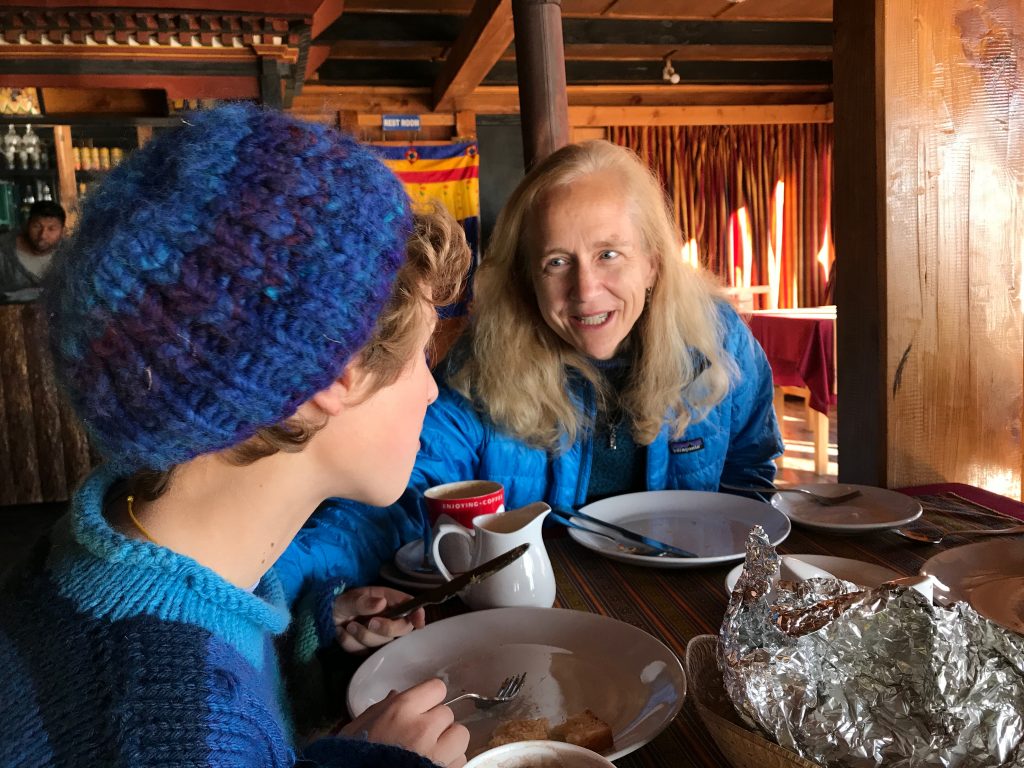
We were just walking up to the Black-necked Crane Information Center, directly above the lodge, when James waved us back down, to see a group of three cranes feeding close below the lodge.
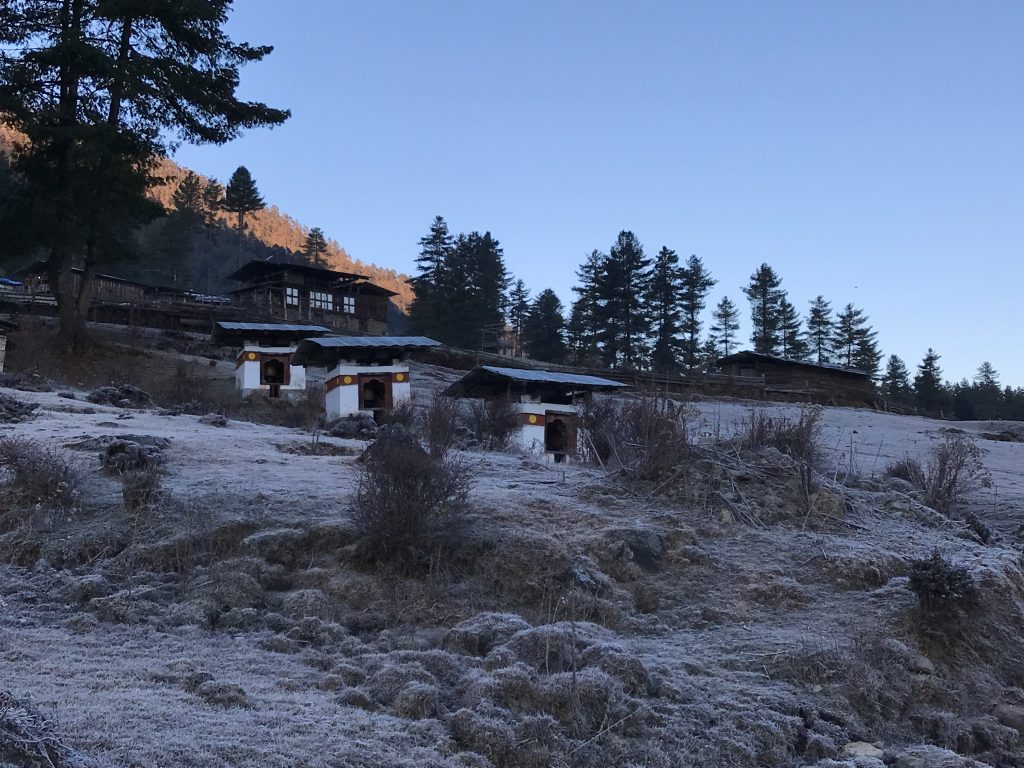
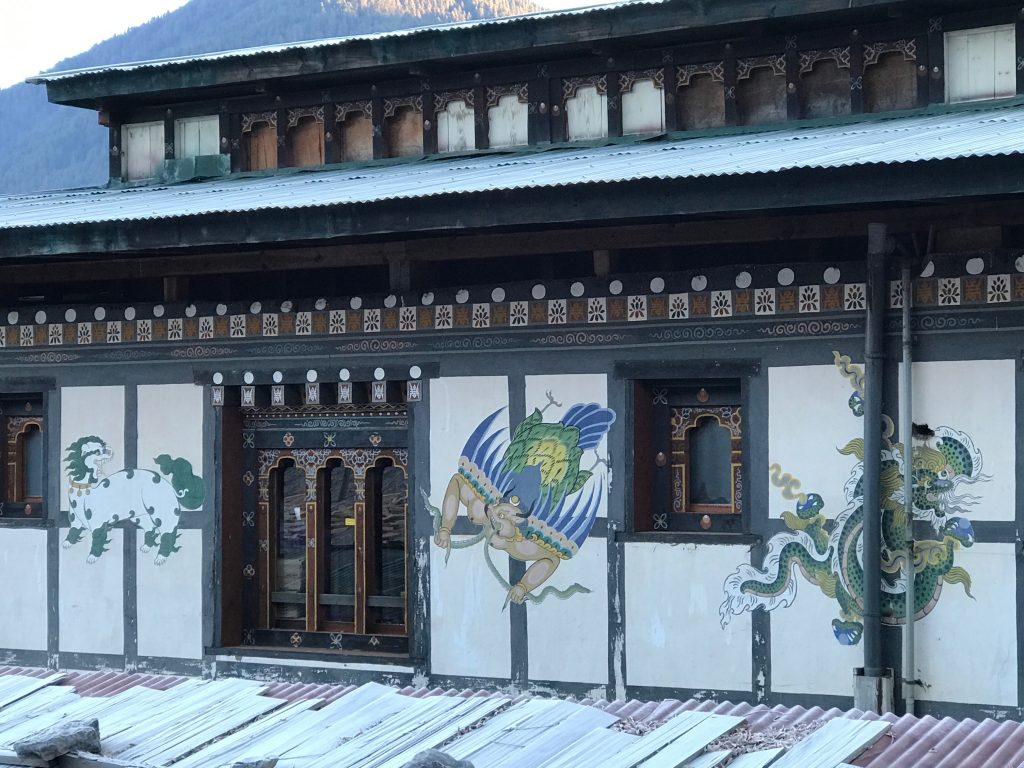
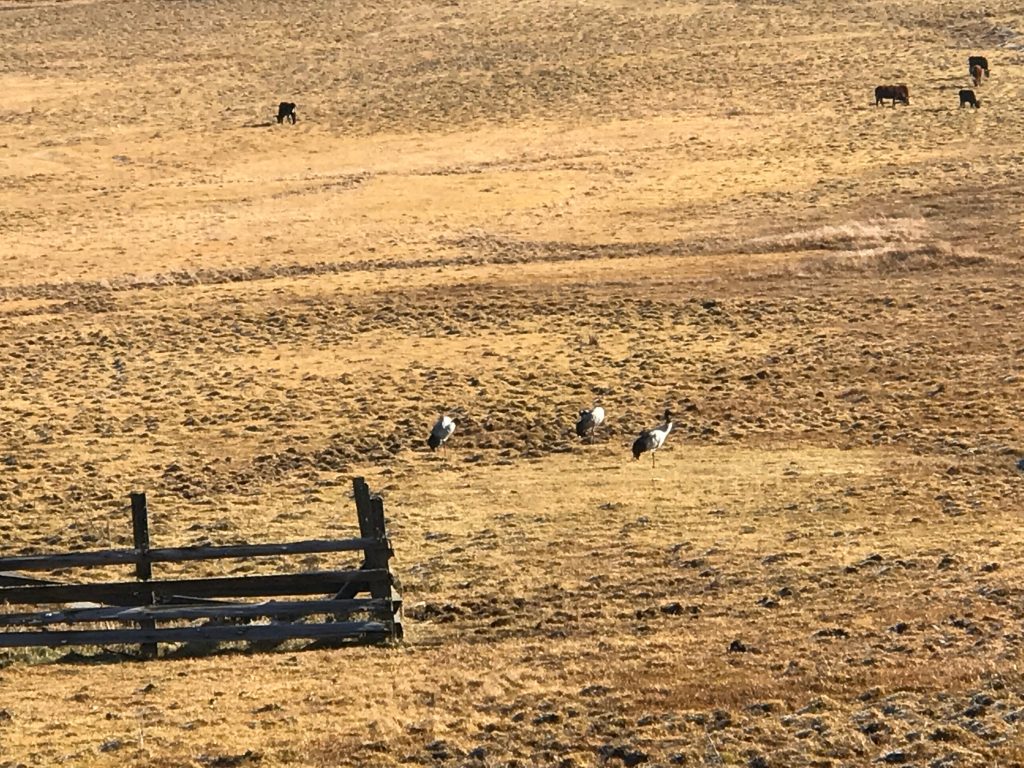
Up at the center, we especially liked the documentary about the cranes, with glorious footage of take-off and landing, and learning the fact that the cranes circle three times around the Gangtey goemba before coming in to land, and circle three times again as they leave the valley.
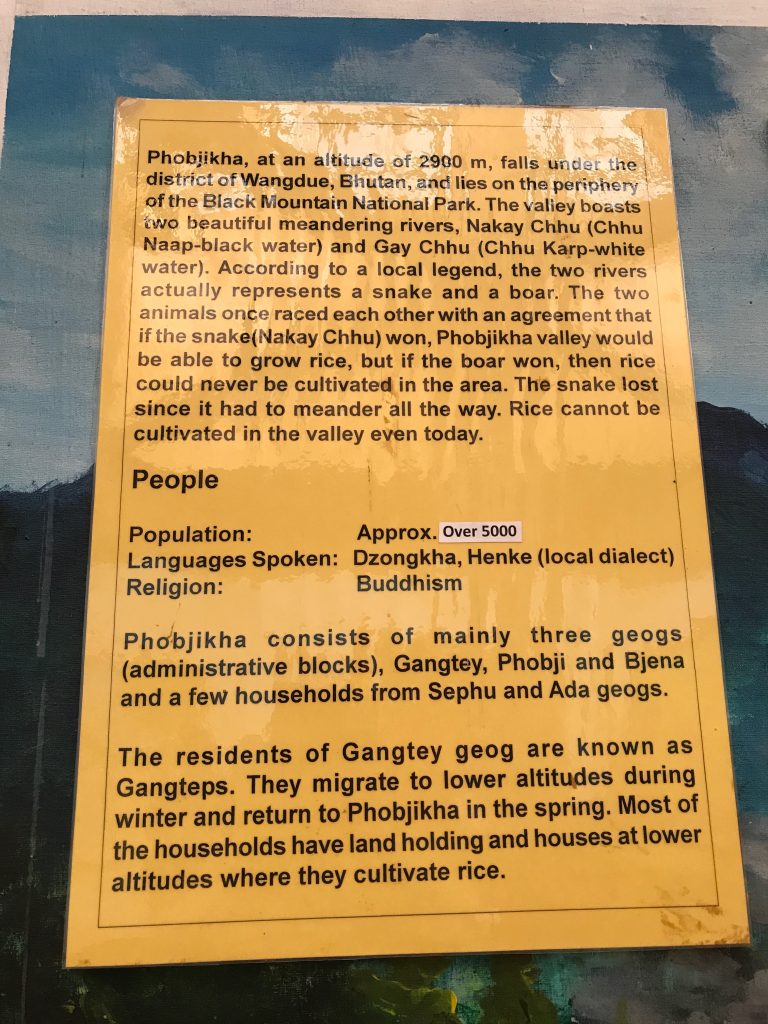
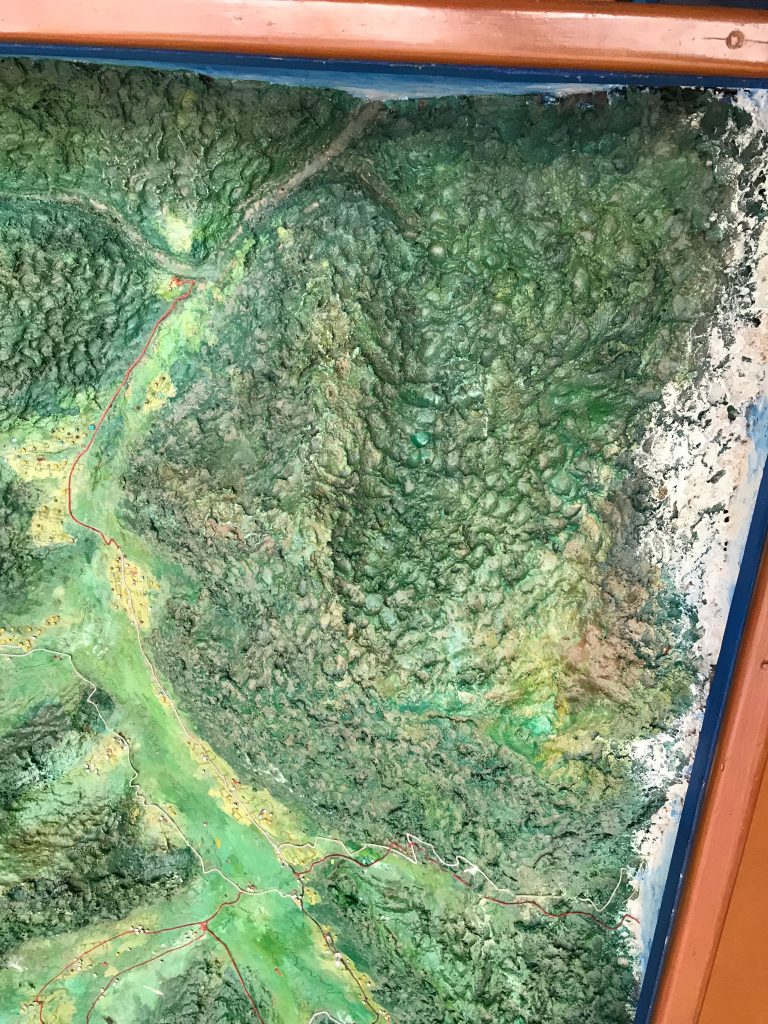
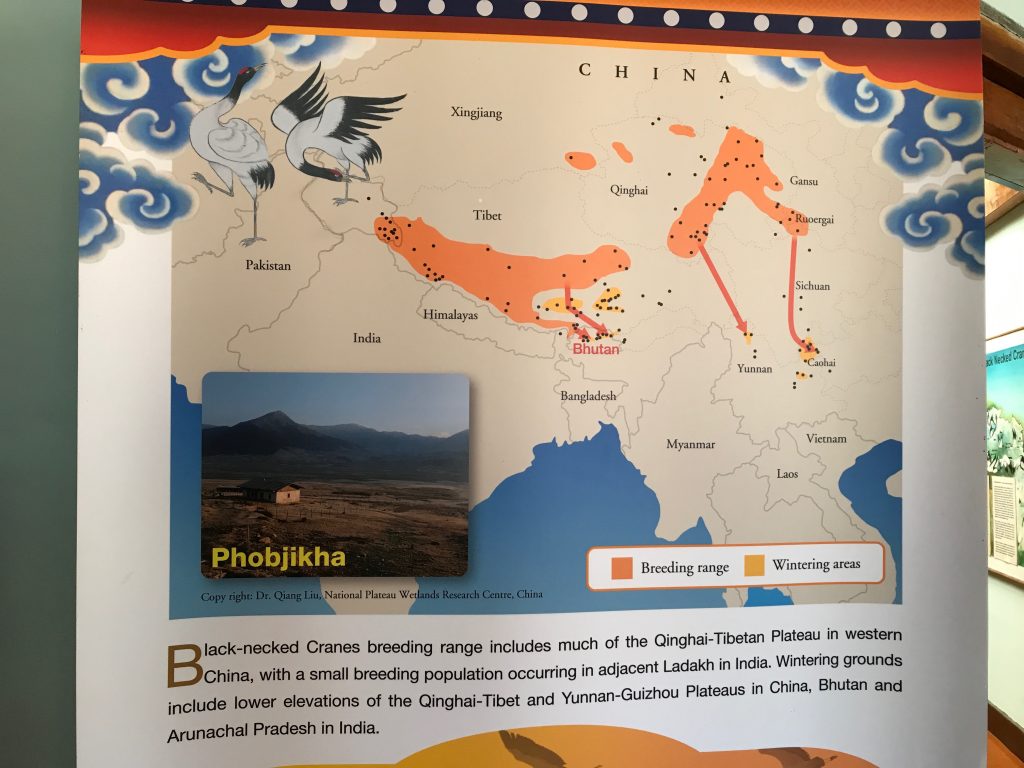
The information center had excellent binoculars, and Zoë managed to get a decent photograph through the scope. We could have watched the birds preen and ruffle their feathers all day…
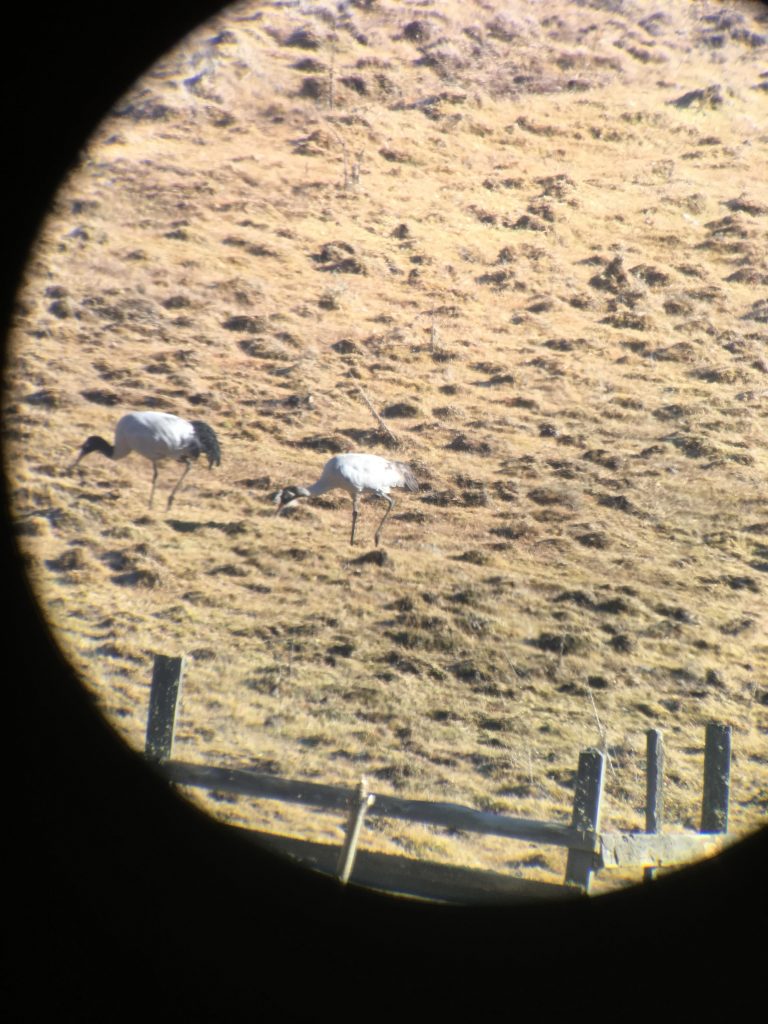
Still, the road was calling. We drove a short distance to the Nyelung Dechenling, built in the fourteenth century by Longchenpa. (“Ling” means residence—this is one of eight “residences” built by Longchenpa.)
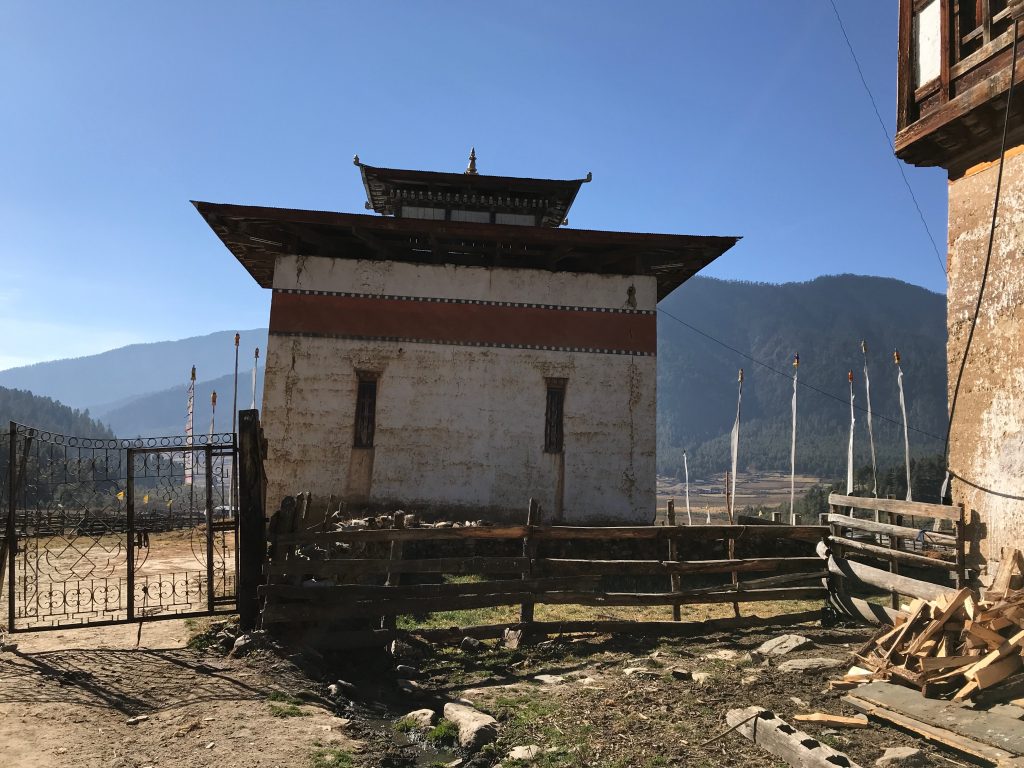
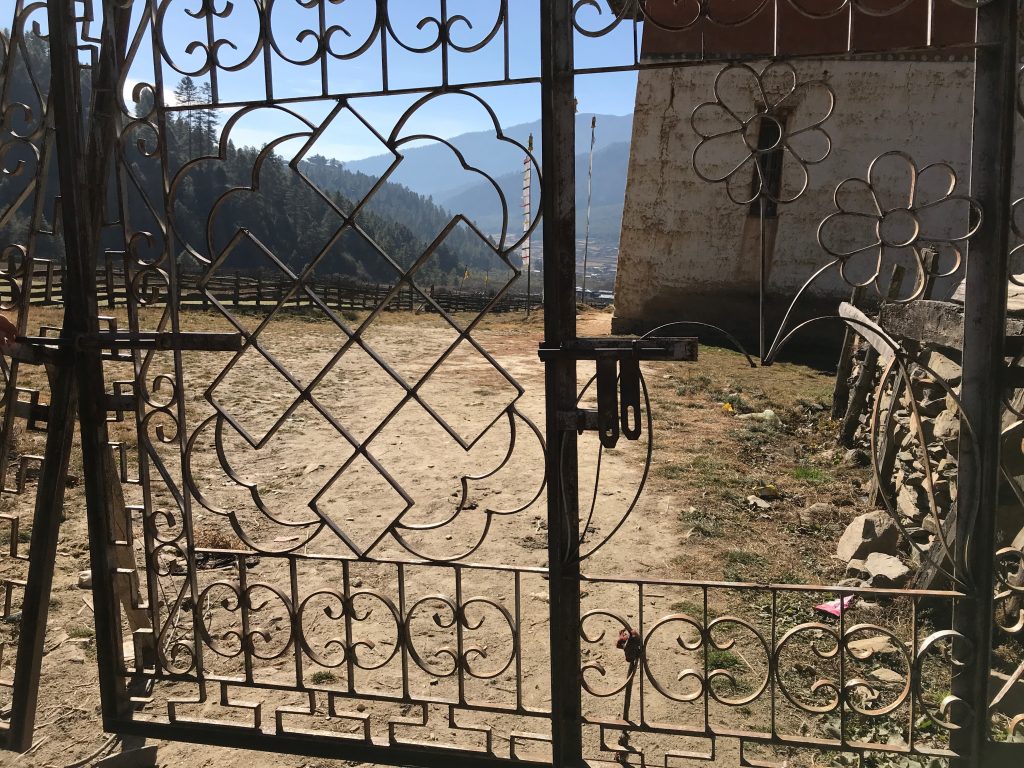
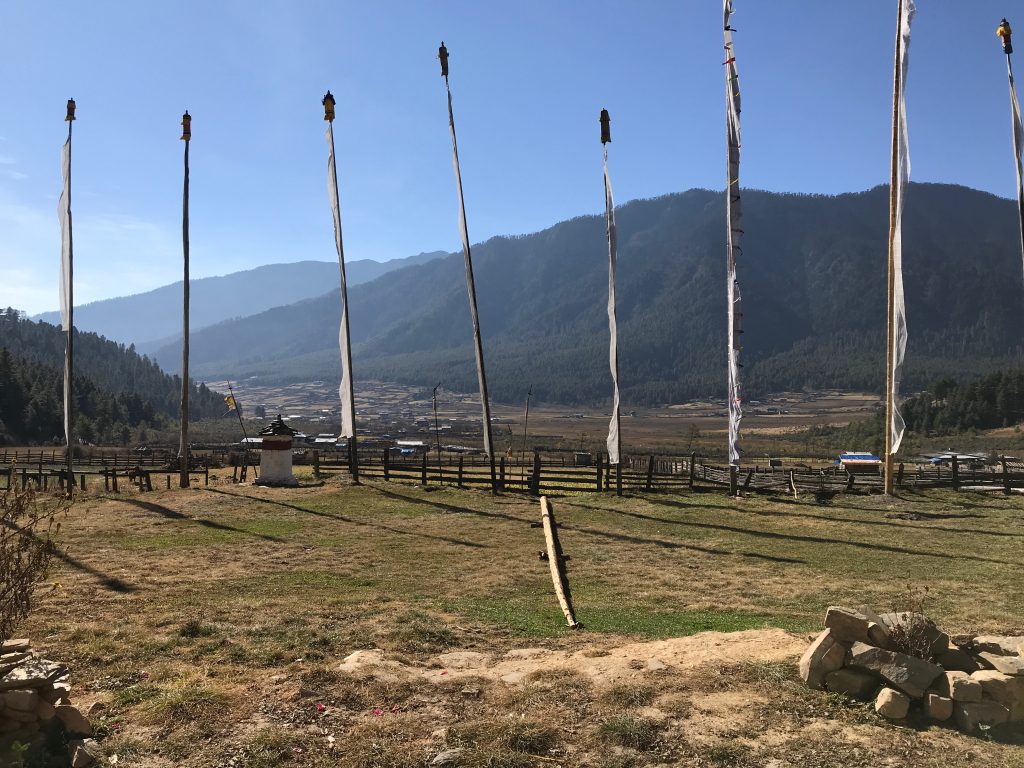
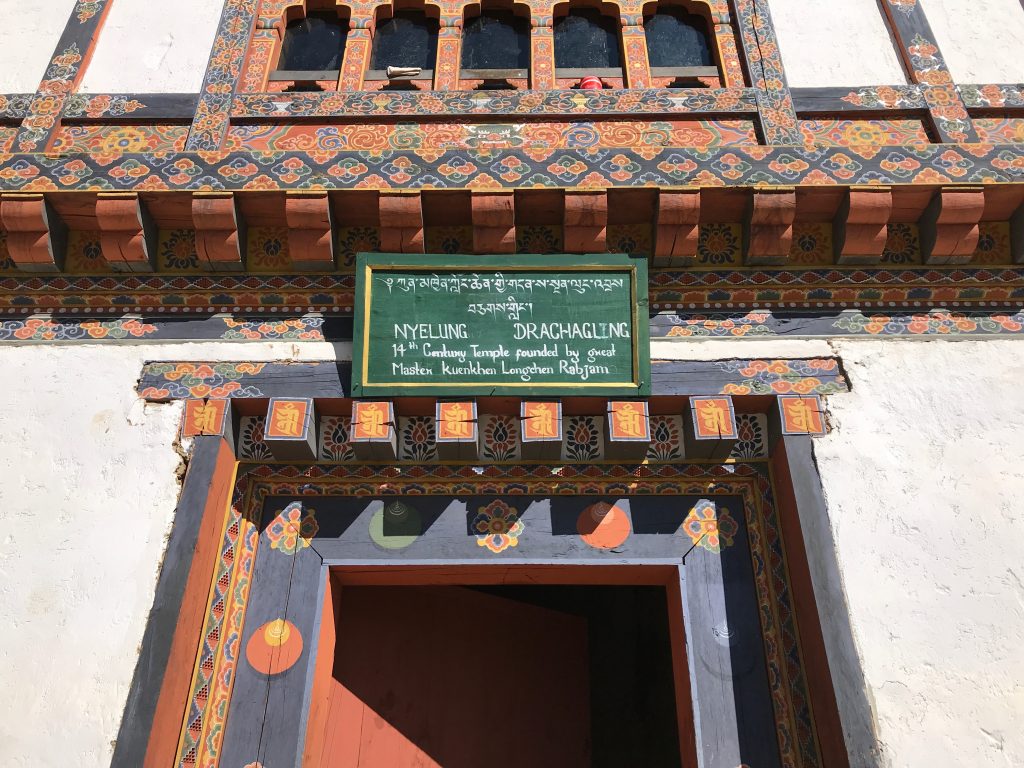
A youngish monk studying up the hill was down helping at the monastery for the school vacation: he was a welcome translator for the resident older monk. The sanctuary was up a steep wooden stairway (like a ladder with rails). The statue of Guru Rinpoche was flanked by Longchenpa on one side and the reincarnation of Pema Lingpa’s speech (I think) on the other side, with a fourth statue toward the back, of a locally important religious figure. James asked if we could see relics, and the young monk said it was not permitted, but the older monk took out two relics from behind the altar: a “skillet” or iron plate said to be formed by Pema Lingpa’s hands, without tools (the underside had endless ridges looking like fingerprints); and a petrified elephant’s tooth, said to come from the elephant Longchenpa rode on when he came to found the monastery.
In the distance, we could see the “upside down tree,” planted when Longchenpa struck his staff into the ground.
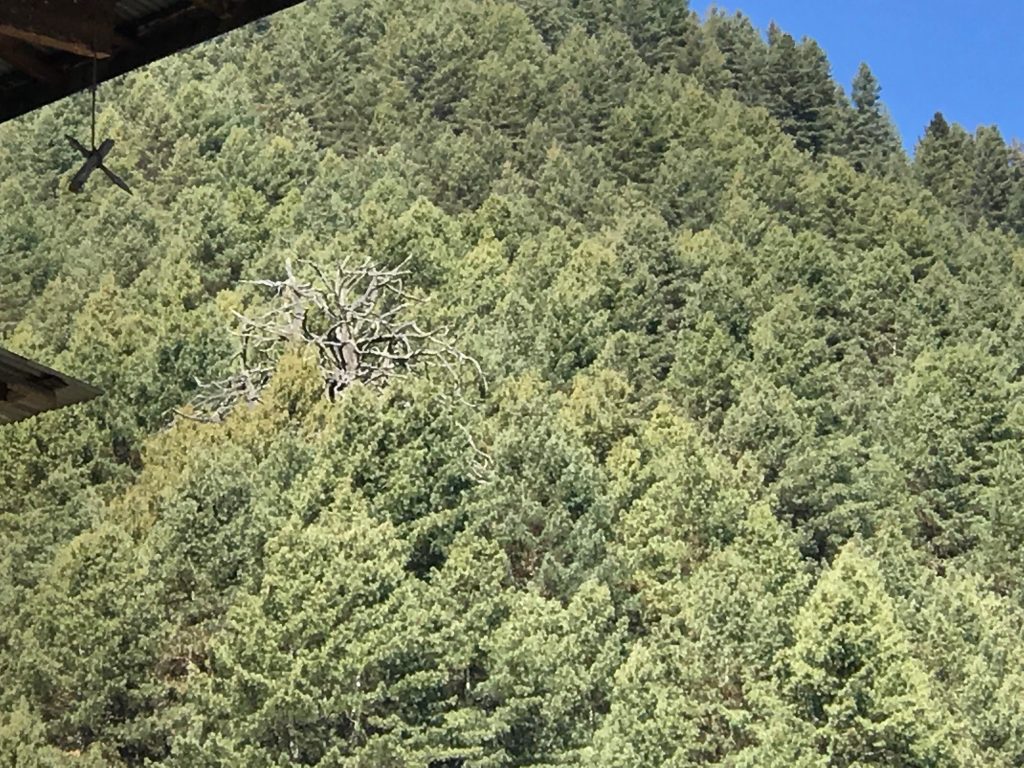
We drove up to Gangtey goemba, but this time not to visit the goemba (though it was founded by Pema Lingpa, and I at least was interested—but there are only so many monasteries you can focus on in a given day). Instead, we headed off down the “nature trail”—a very easy meander through tall pines, meadows, along a road, and back into the pines.
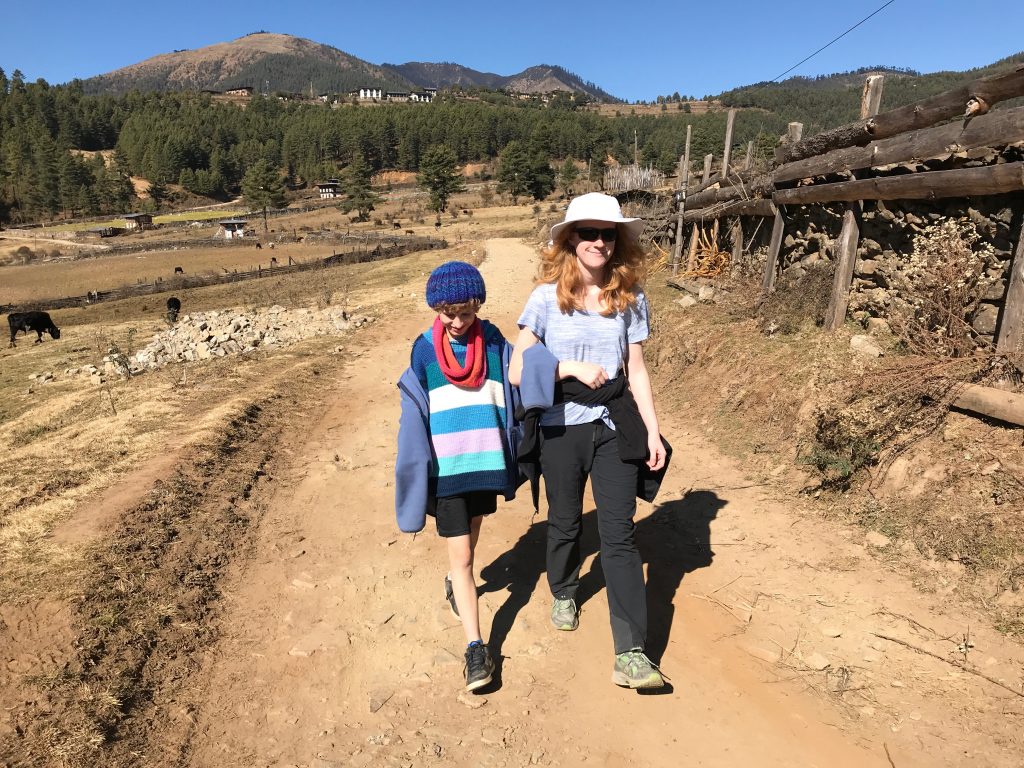
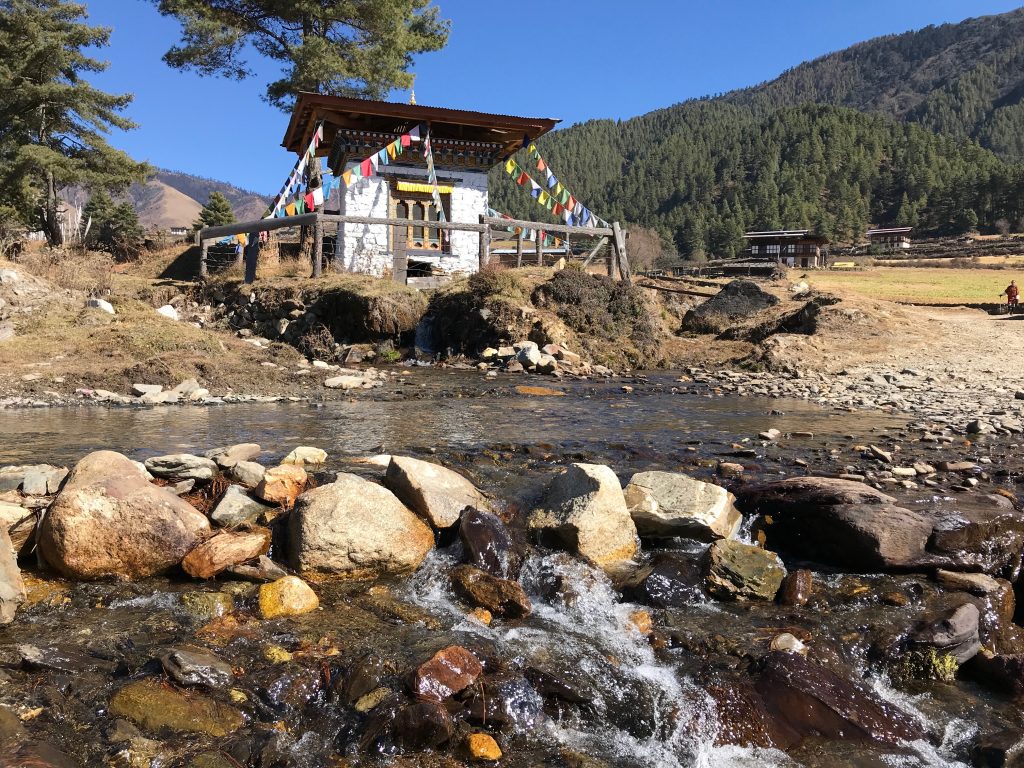
The end point was a gathering of prayer flags with a gazebo for crane-watching—and we did manage to see a few birds take off across the valley. The sun was warm, like a blessing on our backs.
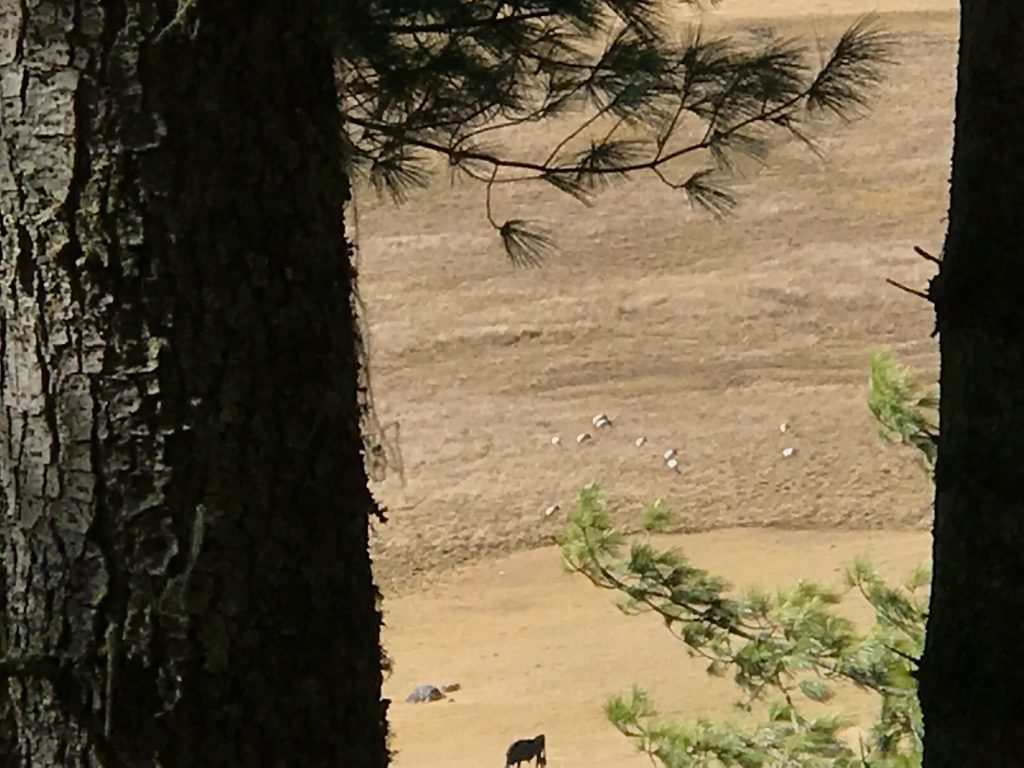

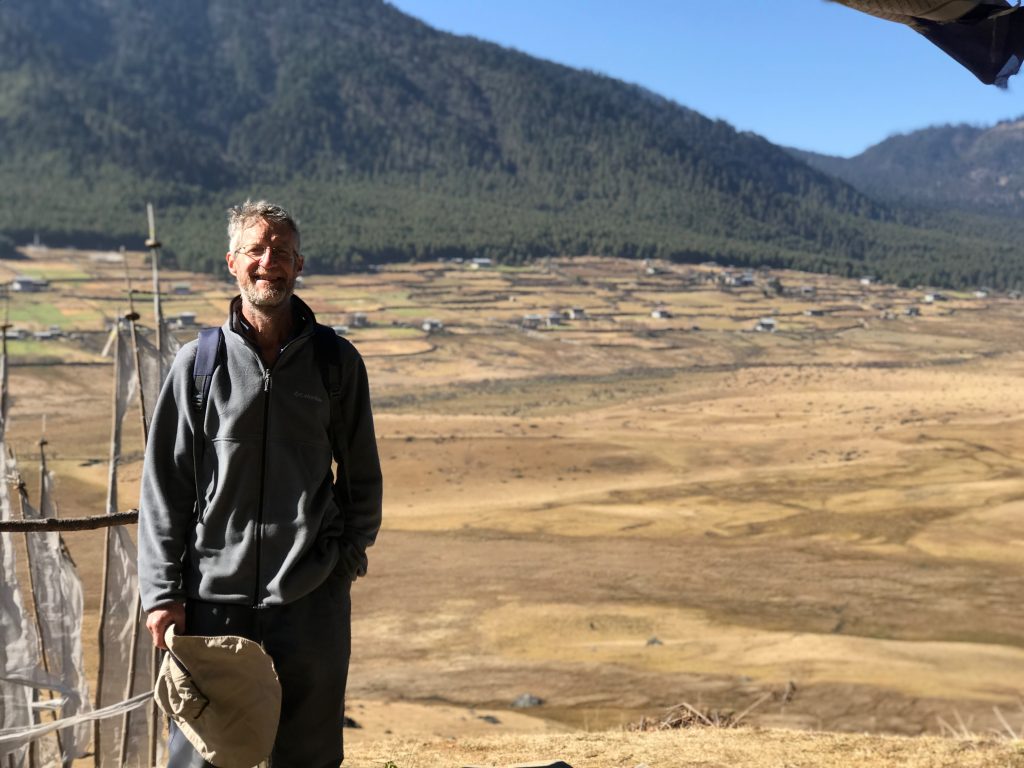
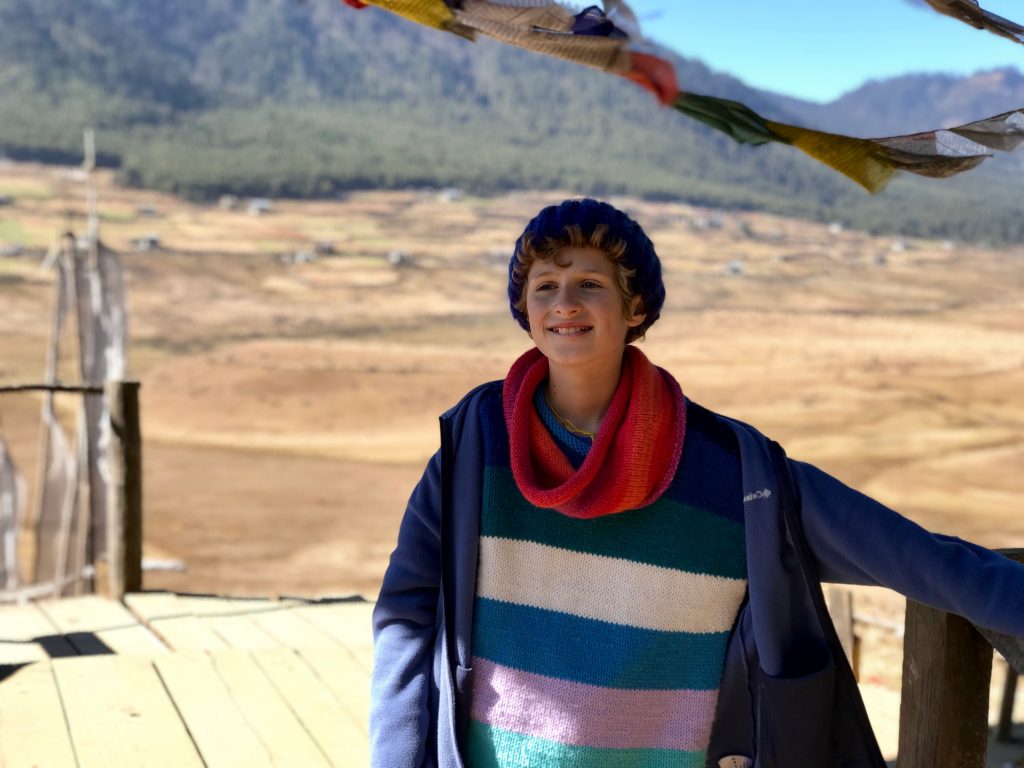
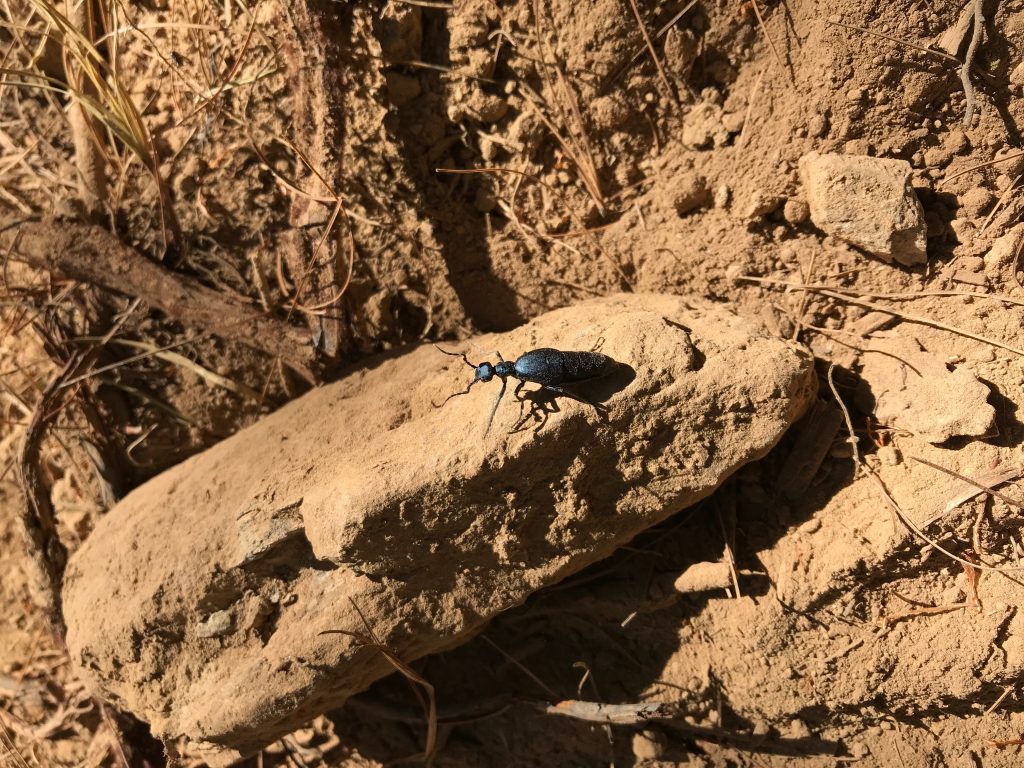
Then we were back on the road for another few hours, through rough road and smooth, heading for Punakha. We saw a troupe of langurs on the way, and the mountains were as beautiful as ever.
The Meri Puensum is a lovely place to stay, with beautiful views out of broad windows and a balcony. Electricity was somewhat erratic here, but that added to the sense of adventure—and a semi-candlelit dinner created a sense of intimacy, even though we were sharing the dining room with a large tour group of elderly Americans.
